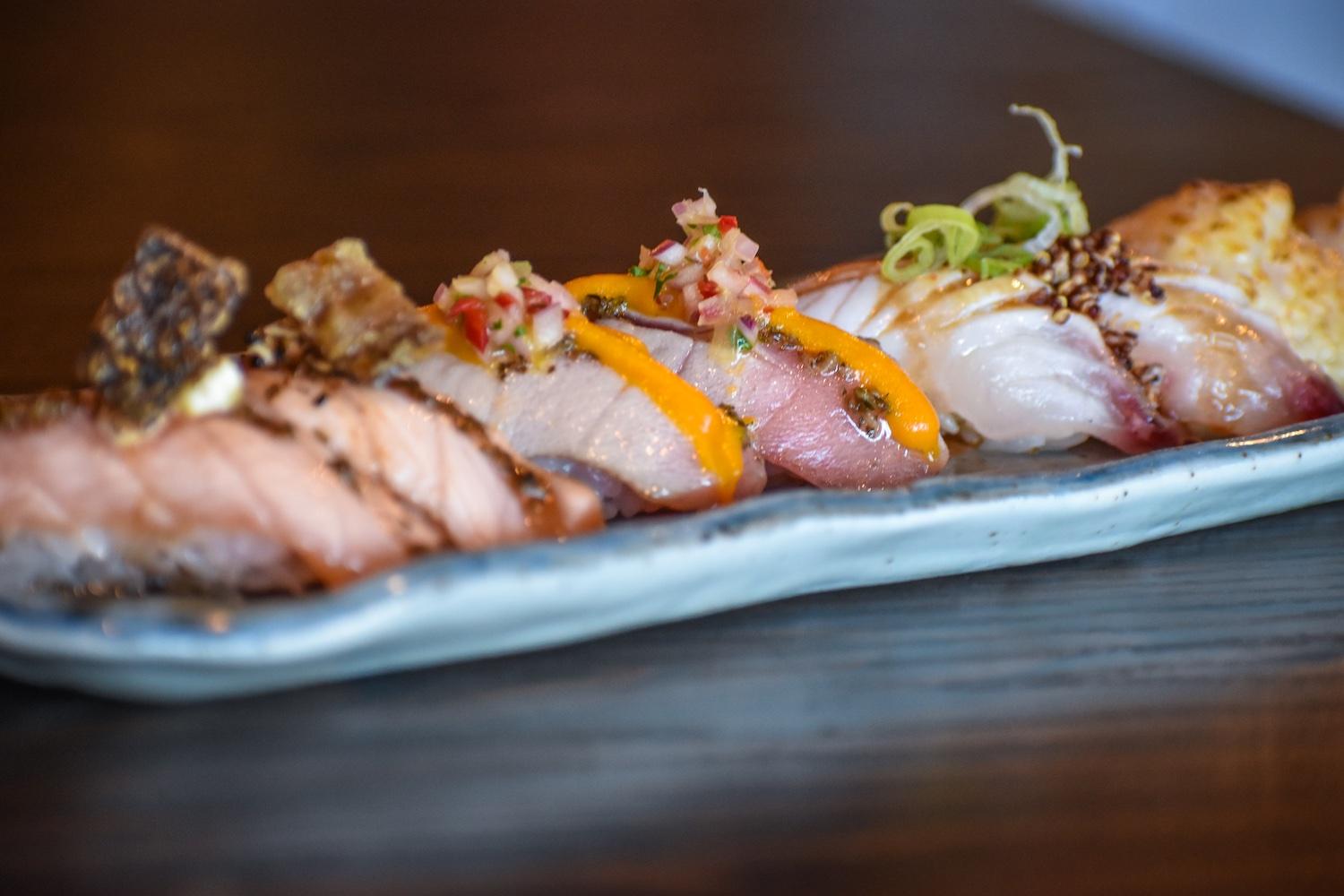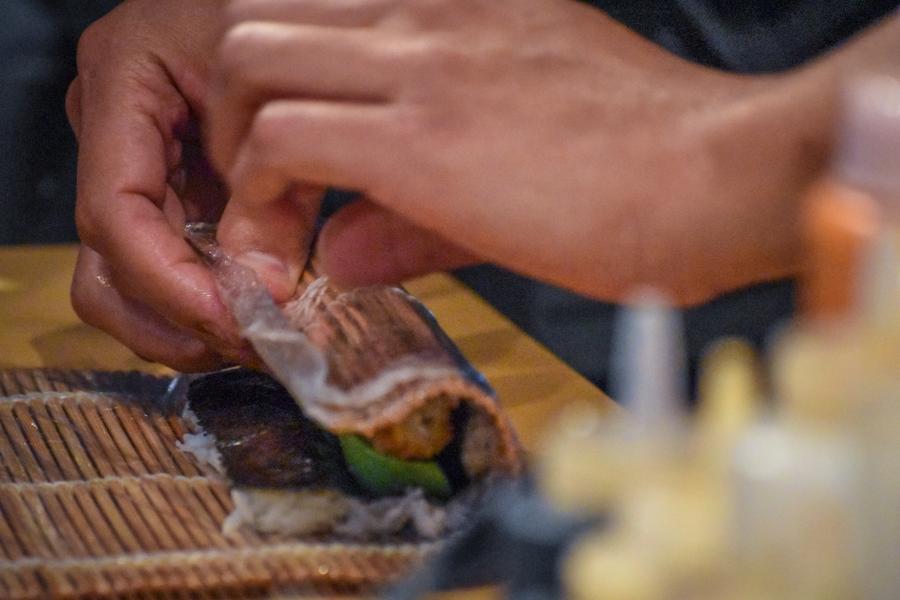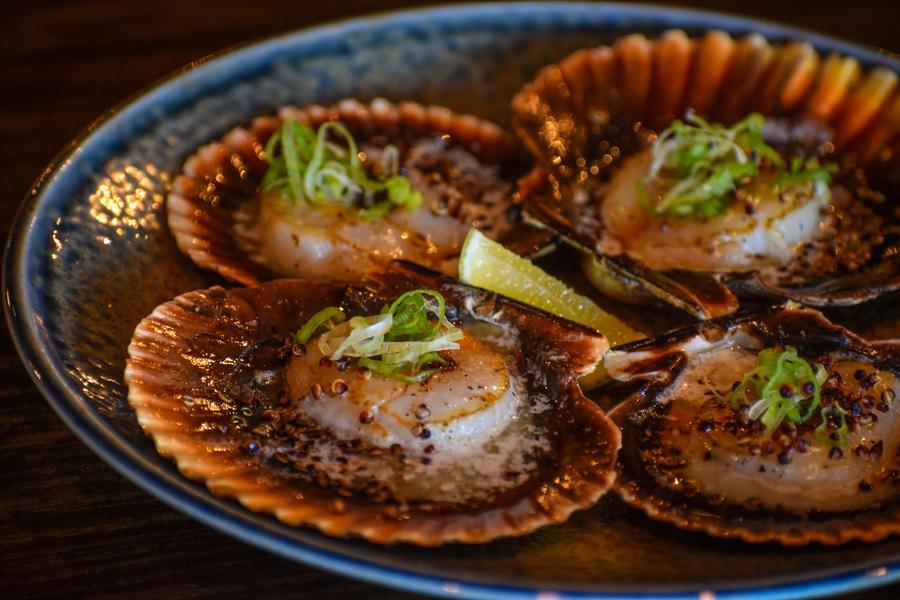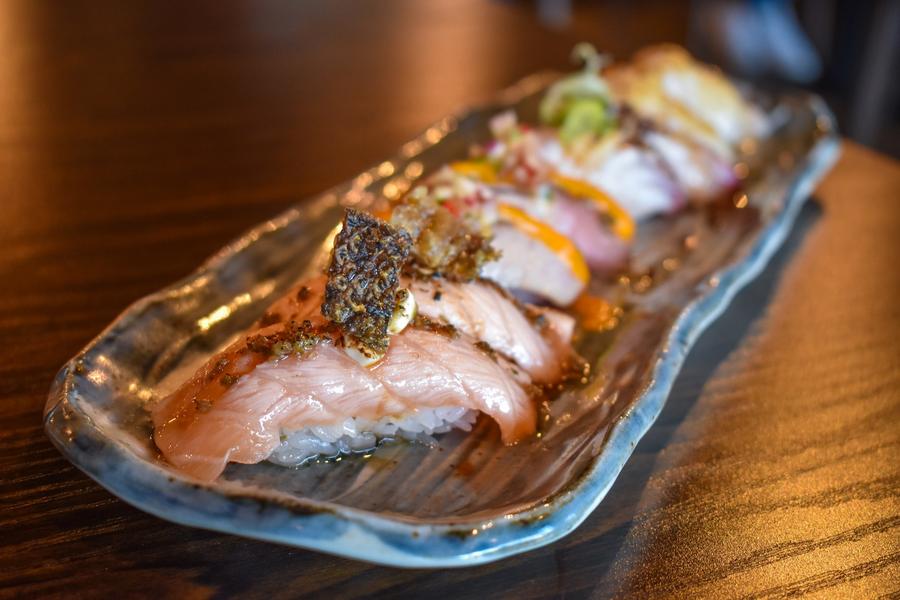When it comes to Sushi Nikkei in Bixby Knolls, there is often confusion over what, precisely, “Peruvian sushi” means—and to begin with, its Peruvian owners, Daiwa Wong and her husband Eduardo Chang Ogata, this is not fusion food but a direct product of Japanese culture flourishing in Peru.
“Sushi is as Peruvian as it is Japanese back home,” Daiwa said. “They are intertwined with the spirit of the Nikkei.”
“Nikkei” in Japanese means those of Japanese descendants, the literal span of the Japanese diaspora worldwide—and for a culture so subsumed in its own identity, with strong ties to family and geography, those outside of the island proper have had to doubly fight to maintain their sense of Japanese-ness while also assimilating to their new homes.

The rise of the Nikkei in Peru was not an easy one: After anti-Japanese sentiments arose to such a height that a race riot occurred in 1940, the Nikkei of Peru realized they needed to “open up and integrate into Peruvian society,” according to sociologist and Japanese diaspora historian Ayumi Takenaka¹—despite an overwhelming history of being excluded from that very society that included the destruction and stealing of their property.
Long Beach—unlike other spaces in SoCal—reflected what Daiwa and Eduardo wanted as immigrants: Something near the ocean with a place that honored a sense of community and inclusion.
So “Nikkei” in Peru is much more than just those of Japanese descent; it is a cuisine that has simultaneously lifted up Peruvian food and its Nikkei population. Think Nobu Matsuhisa, founder and chef for the world-recognized Nobu, who opened his first restaurant in Lima, Peru in 1973.

Eduardo’s parents—Japanese on his mother’s side, Chinese on his father’s—were born in Peru and experienced the climb of not just Nikkei cuisine but Asian culture and food in general—and it was through them that, through decades of traditions, he found himself creating sushi Nikkei-style.

“It was about twenty years ago that I really began incorporating Peruvian flavors into my sushi,” Eduardo said. “I have a sushi restaurant in Peru [Yume in Lima] after having worked seven years at some of Lima’s most respected sushi restaurants. It was there that I began to gauge people’s reactions to what they were eating: What they liked, if it was different from traditional ingredients… From there, I created the list of what I wanted to do in my head and have been doing it ever since.”
The rise of the Nikkei in Peru was not an easy one: Facing massive discrimination for decades, they realized they had to integrate into the very society stole their property—and they did that through the connection of food.In other words, what one can expect from Sushi Nikkei in Long Beach is what you can expect from Nikkei cuisine in Peru: Nikkei Peruvian ingredients—chalaquita, quinoa, aji chiles, parrillera salsa…— molded by Japanese techniques.

Where one can have a bowl of Peruvian ceviche—a fresh fish of chef’s choice, entirely raw and unmarinated, sitting in a bath of leche de tigre and small bed of sweet potato, with its crunchy bits of cancha—that cleanly and happily steers clear of the lime-saturated’n’marinated ceviche we know from Mexico.

It’s where you get to see someone share something that is both intimate and traditions-based; something that is of their home and, given they are using fish from our neighboring Pacific, part of our home.
It is an honoring of the Nikkei’s own history in Peru.

Daiwa and Eduardo had long been friends—their Instagrams share photos of their days at Lima’s Colegio Peruano Chino Juan XXIII nearly two decades ago as their relationship progressed—but it wasn’t until, after living in the Valley and unsatisfied with her then-relationship, a recently-single Daiwa returned to Peru.
“When I went back home to Peru, we just started hanging out and we honestly fell in love,” Daiwa said. “Four years ago we got married and Eduardo decided he wanted to try living here in the States—the dream, of course, to open a place as successful as our places in Lima.”

“At first, the lack of people on foot and the heavy traffic [from the busy Atlantic Avenue] had made us question whether we had chosen the right spot,” Daiwa said. “But the response, from the get go, has been incredibly supportive.”

And for those uninitiated in Nikkei cuisine—just as I was—fear not: The servers are there to help or, if you trust me, I can assure you there is no bad order at Sushi Nikkei. However, I do have a sincerely deep suggestion: The eight-piece Sushi Nikkei tasting, where you can feel and taste the evolution of Eduardo’s sushi journey. From popped-and-seasoned quinoa atop a white fish to a genuinely surprising butter-meets-parmesan scallop, where Eduardos house-made compound parmesan butter is set atop a scallop before being seared to a golden brown crisp.
It’s nigiri gone Peruvian-and its as wondrous as it is warming to experience, particularly given the journey of Eduardo and Daiwa to the shores of Long Beach.
And with that vibe, you can watch Sous Chef Diego Kanashiro masterfully slice octopus or prep the fish. Or you can witness the presence of Eduardo and Daiwa, connecting with people—be it in Spanish or English—sharing tales of travel, food, community, and love.
Sushi Nikkei is located at 3819 Atlantic Ave. in Bixby Knolls, Long Beach.
****
Sources:
1. Takenaka, A. (2004). The Japanese in Peru: History of Immigration, Settlement, and Racialization. Latin American Perspectives, 31(3), 77-98.
2. Takenaka, A. (2003). Paradoxes of Ethnicity-Based Immigration: Peruvian and Japanese-Peruvian Migrants in Japan, Pp. 222-235 in R. Goodman, C. Peach, A. Takenaka, and P. White (eds.), Global Japan: The Experience of Japan’s New Immigrants and Overseas Communities. Routledge Curzon Press.
3. Takenaka, A. (2009). How Diasporic Ties Emerge: Pan-American Nikkei Communities and the Japanese State. Ethnic and Racial Studies. 32(8): 1325-45.



